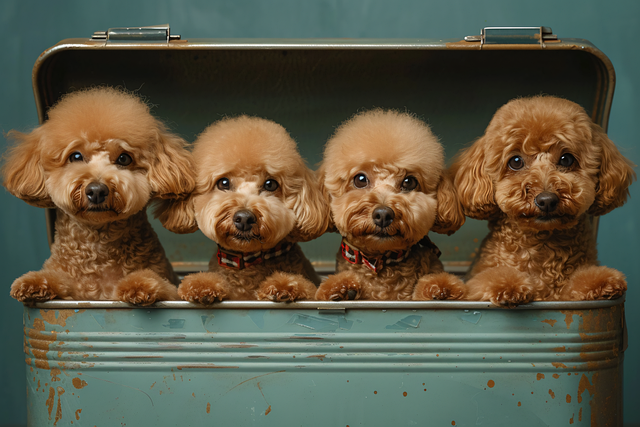
How can I tell if my dog's heatstroke is serious
Let’s be real: It’s a sticky August morning in Los Angeles, and you took your 2-year-old Golden Retriever, Max, for a walk a little later than usual
If you’ve ever watched your dog spend 20 minutes pawing, nudging, and rolling a puzzle toy until a treat finally pops out—tail wagging, proud as can be—only to find that same toy ignored under the couch a week later, you’ve probably wondered: Do dogs really get bored of puzzle toys? New dog parents in New York apartments, Texas backyards, and Seattle condos often splurge on the latest “indestructible” puzzle, excited to keep their pup busy, only to be disappointed when it becomes just another dust collector. The short answer? Yes, dogs can get bored of puzzle toys—but it’s not the toy’s fault. It’s about how we use them, their natural instincts, and keeping that “problem-solving spark” alive. Let’s break down why boredom happens and how to keep those puzzle toys exciting.
Dogs are wired to seek novelty, thanks to their hunter-forager instincts. In the wild, a wolf doesn’t chase the same squirrel every day; they adapt, explore, and tackle new challenges. Your domestic pup carries that same drive: once they’ve mastered a puzzle—figured out that rolling the ball drops a treat, or lifting the flap reveals kibble—the “problem” is solved, and their brain stops releasing those feel-good chemicals that make solving it rewarding. This is called “habituation,” and it happens to all dogs, from the smartest Border Collie to the chillest Pug. A puzzle that’s too easy, left out 24/7, or never changed becomes as boring as a rerun of your least favorite show. For high-energy breeds like Australian Shepherds, this boredom hits faster—their brains crave constant new challenges, and a solved puzzle no longer meets that need.

So, how do you keep puzzle toys engaging? Start with rotation. Keep 3-4 puzzle toys in rotation, hiding 2 away each week and bringing them back later—your dog will greet them like new. Mix up difficulty levels: if your Beagle mastered the basic rubber Kong, try a maze-style puzzle where they have to slide levers or spin disks to get treats. Add “surprise elements”: stuff a familiar puzzle with a new treat (freeze-dried salmon instead of peanut butter) or hide it in a new spot (under a couch cushion instead of their bed). Turn it into a team activity: sit with your dog, gently guide their paw to nudge the toy, and praise wildly when they “solve” it together—positive reinforcement turns a stale toy into a bonding experience. For power chewers like Pit Bulls, opt for durable toys you can “reload” with treats daily, so there’s always a new reason to engage.
Now, let’s tie this to responsible pet care and community living. Boredom with puzzle toys often means your dog needs more mental or physical stimulation—pair toy time with daily walks (and always carry poop bags; fines for skipping cleanup hit $150 in Denver) to burn energy. In apartments, rotating quiet puzzle toys (avoid loud plastic rattlers) keeps noise down for neighbors, especially during work hours. Remember legal basics: A mentally stimulated dog is less likely to exhibit destructive behaviors, but don’t skip core care—keep their rabies vaccine updated (required by law in all 50 states) and schedule vet checkups to rule out other boredom causes, like anxiety. Never scold a dog for ignoring a toy—frustration only makes them disengage more. Instead, treat it as a clue: “My pup needs something new!”
Puzzle toys aren’t one-and-done—they thrive on variety, just like your dog. With a little creativity, rotation, and positivity, you’ll keep those tails wagging, one solved puzzle at a time.

Let’s be real: It’s a sticky August morning in Los Angeles, and you took your 2-year-old Golden Retriever, Max, for a walk a little later than usual

You're enjoying a summer afternoon at the park when you notice your dog has stopped panting and appears disoriented - their gums are bright red

Let’s paint the picture: You’re in your Denver apartment, watching your 4-year-old Boston Terrier, Ruby, plop down mid-play session with her favorite toy

Many dog owners notice their pets nails seem shorter after regular walks,but how much does this daily activity actually help?The answer depends on where you walk—concrete sidewalks or asphalt streets gently file nails as a dog's paws hit the ground

Most dog owners notice their pup scooting across the carpet at some point, but few connect it to impacted anal glands. These small sacs near a dog’s rectum secrete a scent for marking territory

Most vets agree that regular dog teeth cleaning is key to avoiding painful dental issues later. For healthy adult dogs, a professional cleaning at the vet’s office every 12 to 18 months usually works well.